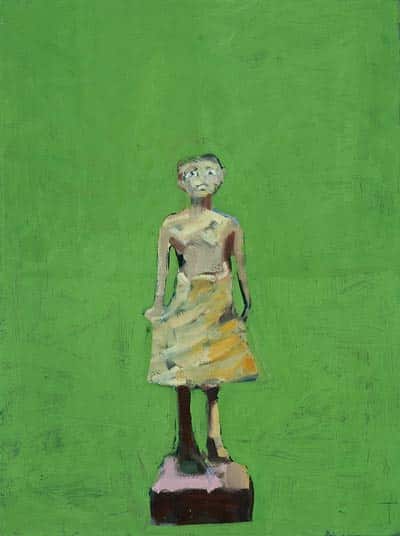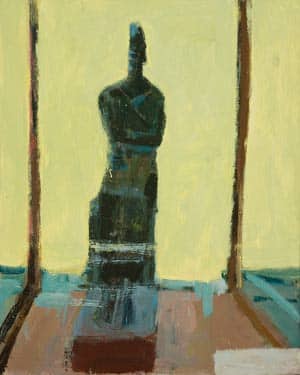by Justine Goodman
I am the daughter of a woman who wrote in 1970 that “involuntary motherhood is slavery.” That was 13 years before I was born, and three years before Roe v. Wade was decided.
She made that argument in a federal court brief in the 1969 case of Abramowicz v. Lefkowitz, which challenged New York State’s abortion laws. As was true in the rest of the country, abortion in New York was illegal. The slavery argument was based on the 13th amendment to the United States Constitution. It was an intrepid, if lesser, point in the larger litigation.
My mother, Emily Jane Goodman, is a champion of women’s rights. Now a trial judge in Manhattan, she was just one year out of law school in 1969 when she was recruited by the civil rights and women’s rights activist Flo Kennedy to be part of the legal team that was challenging the New York State abortion law.
Flo Kennedy, Bella Abzug and Robin Morgan were all part of my everyday world when I was growing up. I dressed as Hillary Clinton for Hallowe’en when she was still the first lady of Arkansas. On the first Take Our Daughters to Work Day in 1993, a photo of me, cloaked in my mother’s judicial robes, was published all over the world.
Finding Our History

So it was not for my mom’s lack of trying that, as I got older, I was mostly complacent about feminism. Sure, I believe in gender equality, and I’ve always been avidly pro-choice, but it seemed that my mother’s generation fought for our rights in the 1970s so that we wouldn’t have to. Growing up in the years of legal abortion — I’m 28 now — it is unbelievable to me that it was illegal to disseminate contraceptives or have an abortion — and in my mom’s lifetime. But with abortion constantly under fire from the religious right and conservative politicians — I mean, really, a “personhood amendment”? — I began to dig into the history of the role played by my mother and her peers.
While Roe v Wade is the subject of an annual parade of events, knowledge of the lawsuits that preceded Roe, like Abramowicz v. Lefkowitz, is elusive, at best. I went to the best source I could find.
“The movement was about breaking free of patriarchal, male-domination in all aspects of life. Having religious institutions — all male — and legislatures — ditto — tell women that there would be no sexual liberation without the penalty of unwanted children or emotionally and physically risky alternatives was unacceptable,” my mother explains over coffee in her living room one recent Sunday night.
But, she adds: “To be honest, until then, I hadn’t given a lot of thought to the issue, never having confronted it myself, and not knowing anyone who had needed or had an abortion, as far as I knew. And I hadn’t had the political ideology to realize the degree of control that was at work here, of men who obviously would never be pregnant, controlling the lives and bodies of those who would be. And I certainly hadn’t really thought much about the punitive aspects — of the price that a woman might have to pay for her sexual liberation, all of which was now surrounding us.”
My mom joined the other lawyers (all women, by the way) to challenge the New York law in court. Lawyers at the Center for Constitutional Rights had already strategized that medical doctors would make the most sympathetic plaintiffs. The argument was that doctors’ rights to practice professionally were subject to interference when they could not perform what they and their patients believed to be the proper medical procedure. As a result, Dr. Helen Abramowicz was the first named plaintiff.
But there were also 300 other plaintiffs. The women plaintiffs ran the gamut: married, unmarried; some who had children, others who didn’t; some had abortions and some had children they could not afford to raise, whether financially or otherwise.
| A law that forces a woman to use her body as an incubator |
So many women were involved as plaintiffs that completing all of the formal depositions for the litigation was considered a major challenge. Instead, a plan was developed for a public taking of testimony. “The court suggested we might proceed with taking depositions in this kind of informal way because it would be more practical, and we agreed. We saw that it would have the unintended effect of becoming an organizational tool, because it was widely publicized,” my mother explains.
Washington Square Methodist Church in Greenwich Village was eventually selected as the venue. To show the hardships suffered by women as a result of the state’s oppressive anti-abortion laws, the lawyers selected 30 representative witnesses. “The prosecutors [on the other side of the case] objected to calling these witnesses, of course, but we proceeded anyway,” my mother explained.
“I was in awe of the women who came forward, telling of their experiences of having to place newborn babies for adoption, to be sent away by their families so no one would know they were pregnant; of women who never knew their biological parents because they were placed for adoption by unwed teenage mothers; people who described their abject poverty because they had bigger families than they could afford,” she recalls.
Arguing for Women’s Freedom
After nearly 30 years on the bench, my mother’s current reaction to talking about this subject is not what most of us would call emotional; to her, this is a purely political issue. Still, in listening to her recount some of the testimony from the case, I begin to get a more tangible sense of exactly how physically and emotionally traumatizing an unwanted pregnancy is when you have no freedom of choice.
There were women who described back-alley abortions, blindfolded trips to abortionists who may or may not have been actual doctors. There were some who had been severely damaged by the well-known metal hanger abortions, and others who had to get psychiatrists to certify that they would be suicidal if they gave birth. And there were also women who described their desperate efforts to raise money to leave the country in order to obtain the procedure legally in Puerto Rico or even Japan.

Of course, the stories were only part of the case. There had to be compelling evidence that the statute violated the constitutional rights of the plaintiffs. And that’s where my mother’s slavery argument came in.
“My argument was that a law that forces a woman to use her body as an incubator makes her a victim of slavery and involuntary servitude,” she says. In other words, freedom had to include freedom from childbearing, if that was a woman’s preference, and freedom to plan the role that motherhood might or might not play in her life. “I organized some of the few public officials who were on our side, as well as some progressive groups such as Citizens Committee for Children, Women in City Government, the National Medical Committee for Human Rights, to support my brief on compulsory pregnancy as slavery.”
In the end, the Abramowicz case was rendered moot when the New York State legislature changed the statute in 1970, making it possible for women to obtain abortions by safe and legal means. But the attention generated by the lawsuit — making public the testimony of women and doctors who had experienced first-hand the consequences of the existing laws — was a major step toward the eventual legalization of abortion nationally, as well. In short, it became hard to ignore what these women had to say.
The 13th Amendment argument was not raised in Roe v. Wade, which was decided largely on the basis of the right to privacy under the Ninth Amendment with a reference to the 14th Amendment on equal protection of the laws in all states. Even my mother calls her slavery argument a “very radical idea,” and, she says, “I don’t think that many other people believed it or believed I meant it. But I certainly did. And still do.” Some legal critics, including U.S. Supreme Court Justice Ruth Bader Ginsberg, have pointed out that the challenges to the anti-abortion laws should have been presented and decided on the basis of a woman’s constitutional rights, rather than privacy. If that had happened, perhaps the decision would have been less susceptible to erosion by the courts and legislatures, as it has been for nearly 40 years, and continues to be.
My mother and I have shared things all my life, but before I interviewed her for this article, I had only the vaguest sense of the pre-Roe history of abortion. With the current attacks on women’s reproductive rights, I now see that this is the time to fight on the basis of our civil rights and the constitution — including, perhaps, the 13th Amendment ban on involuntary servitude.
Justine Goodman is a freelance writer, editor and blogger, whose work has appeared in a variety of national publications, both in print and online. Many can be read on her website.
